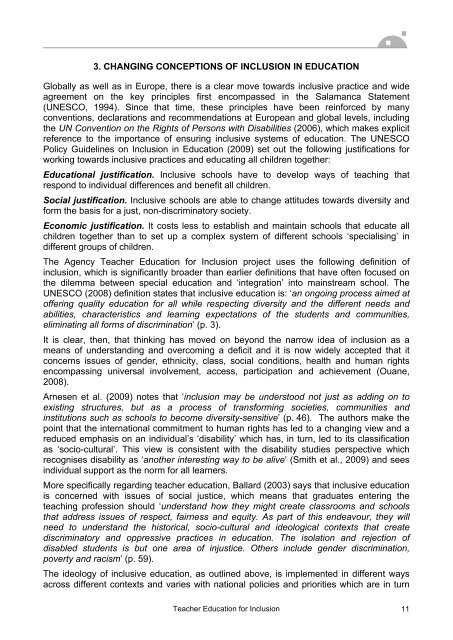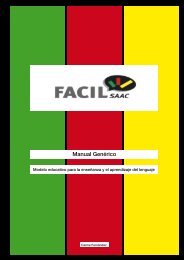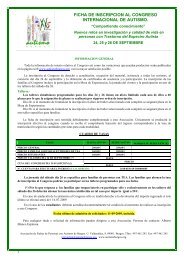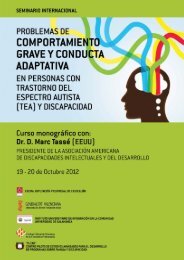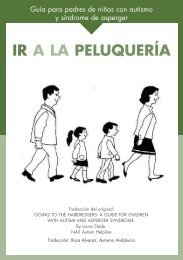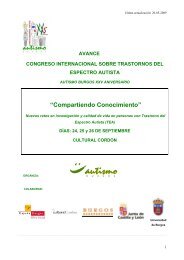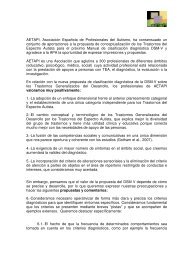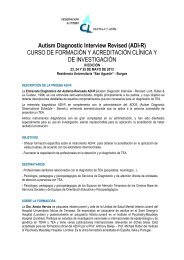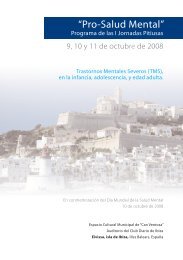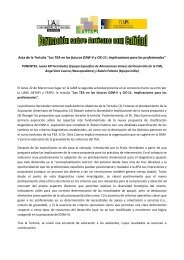TEACHER EDUCATION FOR INCLUSION - Aetapi
TEACHER EDUCATION FOR INCLUSION - Aetapi
TEACHER EDUCATION FOR INCLUSION - Aetapi
Create successful ePaper yourself
Turn your PDF publications into a flip-book with our unique Google optimized e-Paper software.
3. CHANGING CONCEPTIONS OF <strong>INCLUSION</strong> IN <strong>EDUCATION</strong><br />
Globally as well as in Europe, there is a clear move towards inclusive practice and wide<br />
agreement on the key principles first encompassed in the Salamanca Statement<br />
(UNESCO, 1994). Since that time, these principles have been reinforced by many<br />
conventions, declarations and recommendations at European and global levels, including<br />
the UN Convention on the Rights of Persons with Disabilities (2006), which makes explicit<br />
reference to the importance of ensuring inclusive systems of education. The UNESCO<br />
Policy Guidelines on Inclusion in Education (2009) set out the following justifications for<br />
working towards inclusive practices and educating all children together:<br />
Educational justification. Inclusive schools have to develop ways of teaching that<br />
respond to individual differences and benefit all children.<br />
Social justification. Inclusive schools are able to change attitudes towards diversity and<br />
form the basis for a just, non-discriminatory society.<br />
Economic justification. It costs less to establish and maintain schools that educate all<br />
children together than to set up a complex system of different schools ‘specialising’ in<br />
different groups of children.<br />
The Agency Teacher Education for Inclusion project uses the following definition of<br />
inclusion, which is significantly broader than earlier definitions that have often focused on<br />
the dilemma between special education and ‘integration’ into mainstream school. The<br />
UNESCO (2008) definition states that inclusive education is: ‘an ongoing process aimed at<br />
offering quality education for all while respecting diversity and the different needs and<br />
abilities, characteristics and learning expectations of the students and communities,<br />
eliminating all forms of discrimination’ (p. 3).<br />
It is clear, then, that thinking has moved on beyond the narrow idea of inclusion as a<br />
means of understanding and overcoming a deficit and it is now widely accepted that it<br />
concerns issues of gender, ethnicity, class, social conditions, health and human rights<br />
encompassing universal involvement, access, participation and achievement (Ouane,<br />
2008).<br />
Arnesen et al. (2009) notes that ‘inclusion may be understood not just as adding on to<br />
existing structures, but as a process of transforming societies, communities and<br />
institutions such as schools to become diversity-sensitive’ (p. 46). The authors make the<br />
point that the international commitment to human rights has led to a changing view and a<br />
reduced emphasis on an individual’s ‘disability’ which has, in turn, led to its classification<br />
as ‘socio-cultural’. This view is consistent with the disability studies perspective which<br />
recognises disability as ‘another interesting way to be alive’ (Smith et al., 2009) and sees<br />
individual support as the norm for all learners.<br />
More specifically regarding teacher education, Ballard (2003) says that inclusive education<br />
is concerned with issues of social justice, which means that graduates entering the<br />
teaching profession should ‘understand how they might create classrooms and schools<br />
that address issues of respect, fairness and equity. As part of this endeavour, they will<br />
need to understand the historical, socio-cultural and ideological contexts that create<br />
discriminatory and oppressive practices in education. The isolation and rejection of<br />
disabled students is but one area of injustice. Others include gender discrimination,<br />
poverty and racism’ (p. 59).<br />
The ideology of inclusive education, as outlined above, is implemented in different ways<br />
across different contexts and varies with national policies and priorities which are in turn<br />
Teacher Education for Inclusion 11


